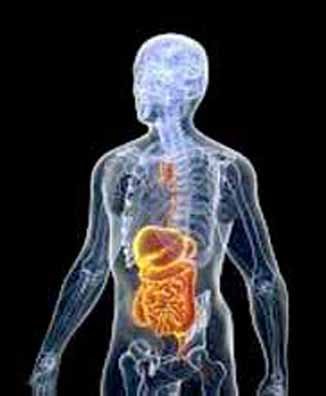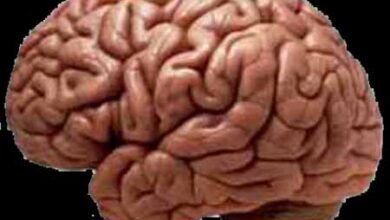
Related To Zoology-181.
|
1. Skin: – is the largest organ of the human body. It also acts as the outermost covering and sensing of the body. 2. A dark colored substance called melanin gives the skin its color and protects the body by absorbing the sun’s ultraviolet rays. 3. The milk gland in humans is a modified composition of the ‘sweat gland’. 4. The rate of respiration in humans is 16 to 18 times per minute. 5. The amount of oxygen in the air exhaled in respiration is 17% and the amount of carbon dioxide is 4%. 6. The growth of breasts, the creation of the uterus, etc. occur due to the origin of a hormone called progesterone in the ovaries. 7. The number of muscles in the human body is 639. 8. The biggest muscle in the human body is Gluteus maxims muscle. 9. Stapedius muscle is the smallest muscle in the human body. 10. Digestion of food in the body starts from the mouth 11. Bile juice is alkaline, this juice is greenish-yellow. This makes the food acidic to alkaline. 12. As soon as the food reaches the stomach, it is first found in the acids and digestive enzymes released. 13. Digestion of digested food occurs in the small intestine. 14. The largest gland in the human body is the liver. 15. Bile juice is secreted from liver cells and collected in the gall bladder. 16. The pituitary or pituitary gland is called the master gland. The pituitary gland is found in the brain. 17. The smallest gland in the human body is the pituitary gland (master gland). 18. Due to the genesis of testo-stereone and andro-sterone hormones in the testes, the development of beard-mustache in the male, difference in nature, development of male genitals etc. are features. 19. The Hypohalamus gland controls the body temperature. 20. A protein called fibrinogen is produced from the liver; which helps in the formation of blood clot. 21. A protein called heparin is produced by the liver, which prevents blood from clotting inside the body. 22. There is storage of vitamin A in the liver. 23. Bile destroys the harmful bacteria that come with food. 24. Austrian scientist ‘Gregor Johann Mendel’ is called the father of genetics. 25. The gene is the unit of heredity and through these the transfer of genetic traits from the parents cell to the offspring by the gametes. 26. The number of chromosome in humans is 46. 27. At the time of fertilization, if the egg meets the sperm with the X chromosome, then the 23rd pair in the zygote will be XX and the offspring formed from it will be the girl. 28. The male has X and Y sex chromosomes and the female has x and x sex chromosomes. Therefore, the chromosome of the male is responsible for determining sex in the child. 29. Conversely, if a sperm with Y chromosomes is fertilized from any egg, the 23rd pair will become a zygote with XY chromosomes and the child will be a boy. 30. Chromosomes is made of DNA And protein. 31. Mutation causes gene changes. 32. Haemophilia: – It is a hereditary disease, in this person suffering from this disease; they lose the ability to blood clot. 33. Colour blindness: – It is a genetic disease. A person suffering from this disease cannot distinguish between red and green. It is a sex-linked disease; its gene is on the X chromosome. 34. The gene of colour blind lies on x chromosome of colour blinded men. This gene is inherited to his daughter and from daughter to her son. 35. The daughters of normal women and colour blinded men would be carriers. 36. All the children of colour blinded male and normal female, the sons would be normal, but girls will be the carrier. 37. Colour blinded women and normal men produces daughter as carrier and all the sons would be colour blind. 38. 50% of the boys and girls of the carrier female & colour blind male produce 50% children normal and remaining 50% would be colour blind. 39. Among the children of the carrier woman and normal man, all girls have normal vision but half of their sons are normal and half colour blind. 40. Principle of inheritance: – The theory of Lamarck, J.B.D. Lamarck in his book Philosophic Zoologique, explained that the development of any organism has the effect of environment, use and application of organs and inheritance of acquired traits.
Dr. (Prof.) Amarendra Kumar. ========== ========= =========== जंतु विज्ञान से संबंधित-182.
1. त्वचा :- मानव शरीर का सबसे बडा अंग है. यह शरीर का बाह्यतम आवरण और संवेदांग का भी काम करता है . 2. मेलेनिन नामक का पदार्थ त्वचा को उसका रंग देता है तथा सूर्य के पराबैगनी किरणों को अवशोशित करके शरीर की रक्षा करता है 3. मनुष्य मे दुग्ध ग्रंथि ‘स्वेद ग्रंथि’ की रूपांतरित रचना है. 4. मनुष्य मे श्वसन लेने की दर 16 से 18 बार प्रति मिनट होती है. 5. श्वसन मे बाहर निकली वायु मे आक्सीजन की मात्रा 17% तथा कार्बन डाई आक्साइड की मात्रा 4% होती है. 6. अण्डाशयों मे ही प्रोजैस्टीरोन नामक हार्मोन की उत्पत्ति के कारण स्तनों की वृद्धि, गर्भाशय की रचना आदि का विकास होता है . 7. मानव शरीर मे मांसपेशियों की संख्या 639 होती है . 8. मानव शरीर की सबसे बड़ी मांसपेशी ग्लुटीयस मैकिस्म मांसपेशी है. 9. मानव शरीर की सबसे छोटी मांसपेशी स्टैपिडियस है. 10. शरीर मे भोजन का पाचन मुख से प्रारम्भ होता है 11. पित्त रस क्षारीय होता है, यह रस हरा-पीला होता है . यह भोजन को अम्लीय से क्षारीय बना देता है. 12. भोजन के पाकाशय मे पहुंचते ही सबसे पहले इसमे अम्लीय पदार्थ तथा पाचक एन्जाइम स्रावित होते हैं. 13. पचे हुए भोजन का अवशोषण छोटी आंत मे होता है. 14. मानव शरीर की सबसे बडी ग्रंथि यकृत (Liver) है. 15. यकृत की कोशिकाओं से पित्त रस का स्रावण होता है तथा पित्ताशय में एकत्रित होता है. 16. पीयूष या पिट्यूटरी ग्रंथि को मास्टर ग्रंथि कहते हैं. पिट्यूटरी ग्रंथि मस्तिष्क मे होती है. 17. मानव शरीर की सबसे छोटी ग्रंथि पिट्यूटरी ग्रंथि (मास्टर ग्रंथि) है. 18. वृषण मे टेस्टो-स्टीरोन तथा एण्ड्रो-स्टीरोन हार्मोन की उत्पत्ति के कारण ही नर में दाढी-मूछ का विकास, स्वभाव मे अंतर, नर जननांगों का विकास आदि लक्षण होते हैं. 19. शरीर के ताप को हाइपो-थैलम ग्रंथि नियंत्रित करती है. 20. फाइब्रिनोजेन नामक प्रोटीन का उत्पादन यकृत से ही होता है; जो रक्त का थक्का बनने मे मदद करता है. 21. हिपैरीन नामक प्रोटीन का उत्पादन यकृत के द्वारा होता है, जो शरीर के अंदर रक्त को जमने से रोकता है. 22. यकृत मे विटामिन ए का संग्रह होता है. 23. पित्त भोजन के साथ आये हानिकारक जीवाणुओं को नष्ट करता है. 24. आस्ट्रिया के वैज्ञानिक ‘ग्रेगर जोहन मेंडल’ को आनुवंशिकी का पिता कहा जाता है. 25. जीन :- आनुवांशिकता की इकाई है तथा इन्हीं के द्वारा मातृ-कोशिका से युग्मकों के द्वारा संतानों में आनुवंशिक लक्षणों का स्थानांतरण होता है . 26. मनुष्य में गुण सूत्रों की संख्या 46 होती है. 27. निषेचन के समय यदि अण्डाणु X गुण सूत्र वाले शुक्राणु से मिलता है तो युग्मनज में 23 वीं जोड़ी XX होगी और इससे बनने वाली संतान लड़की होगी. 28. नर में X एवं Y लिंग गुणसूत्र तथा मादा में दो X लिंग गुणसूत्र पाये जाते हैं | अत: पुरुष का गुणसूत्र संतान में लिंग निर्धारण के लिए उत्तरदायी होता है. 29. इसके विपरीत किसी अण्डाणु से Y गुण सूत्र वाला शुक्राणु निषेचित होगा तो, 23 वीं जोड़ी XY गुण सूत्र वाला युग्मनज बनेगा तथा संतान लड़का होगा. 30. गुणसूत्र का निर्माण डी.एन.ए. तथा प्रोटीन से होता है. 31. उत्परिवर्तन का कारण जीन परिवर्तन होता है. 32. हीमोफीलिया :- यह एक वंशानुगत रोग है, इस रोग से पीड़ित व्यक्ति में रक्त के जमने या थक्का बनने की क्षमता समाप्त हो जाती है. 33. वर्णांधता :- यह एक आनुवांशिक रोग है. इस रोग से ग्रस्त व्यक्ति लाल एवं हरे रंग में भेद नहीं कर सकता है. यह लिंग सहलग्न रोग है, इसका जीन X गुणसूत्र पर होता है. 34. वर्णांध पुरूष के X गुणसूत्र पर वर्णांधता का जीन होता है. यह जीन पिता से पुत्री में और पुत्री से बेटे में वंशागत होता है. 35. सामान्य स्त्री एवं वर्णांध पुरूष की पुत्रियां रोग की वाहक होती हैं. 36. वर्णांध पुरुष व सामान्य स्त्री की सभी संतानें सामान्य होती हैं किंतु, लड़कियां इसकी वाहक होती हैं. 37. वर्णांध स्त्री तथा सामान्य पुरुष की सभी लड़कियां वाहक तथा लड़के सभी वर्णांध होते हैं. 38. वाहक स्त्री व वर्णांध पुरुष के 50% लड़के व लड़कियां सामान्य होते हैं और बाकी 50% वर्णांध होते हैं. 39. वाहक स्त्री व सामान्य पुरुष की संतानों मे सभी लड़कियां सामान्य दृष्टि वाली होती हैं किंतु इनके पुत्रों में से आधे सामान्य और आधे वर्णांध होते हैं. 40. वंशागति का सिद्धांत :- लैमार्क का सिद्धांत, जे.बी.डी.लैमार्क ने अपनी पुस्तक Philosophic Zoologique में प्रस्तुत कर बताया कि किसी भी जीव के विकास में वातावरण का प्रभाव, अंगों का उपयोग और अनुप्रयोग तथा उपार्जित लक्षणों की वंशागति का प्रभाव पड़ता है.
डॉ. (प्रो.) अमरेन्द्र कुमार.
|






